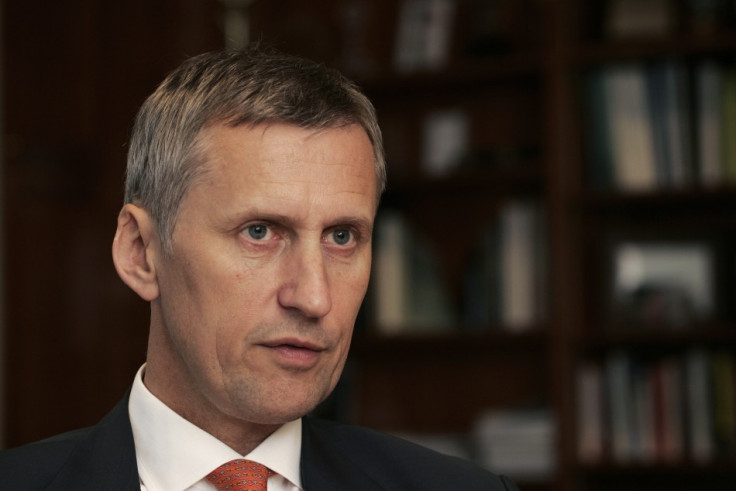Libor Fixing Scandal: The Danger of Thinking Wheatley's Report is the End [OPINION]

As the first bank to settle with a number of regulators in the UK and across the pond, Barclays bore the brunt of Libor fixing scandal fallout, which should really be imposed on all banks with the same vigour.
After years of investigations, millions spent by Barclays to also coordinate internal investigations, the bank was the first of its kind to stick its head above the parapet and claim wrongdoing and settled with a record fine.
Over the weeks and months, the bank shed most of its most longstanding and senior executives, including Chairman Marcus Agius, CEO Bob Diamond and COO Jerry Del Missier, which notably should be remembered managed to steer the bank away from receiving any taxpayers money while RBS became 82 percent state owned and Lloyds at 42 percent by the taxpayer.
There were admissions that a group of traders at the bank colluded and manipulated the benchmark interbank lending rate and subsequently the Treasury Select Committee (TSC) grilled all former Barclays senior executives, as well the Bank of England governor and deputy governors about what went wrong, how such activities were allowed to continue 'unnoticed' and of course what knowledge and to what extent banking chiefs knew about the rigging activities.
It's fair to say that the public and government were baying for blood and Barclays was an easy target to focus on because they were the first to settle.
However, what isn't fair and wouldn't be fair is if other banks, if they are found to have colluded to and have manipulated rates don't get the same hardline approach as Barclays.
It Takes Two to Tango
With all the blustering and focus on a single bank being blasted for manipulating rates, it has become increasingly apparent that a number of critics have forgotten that it takes more than one institution to actually move Libor rates.
So while it takes two to tango, for Libor rate movement, it actually takes several to dance.
The FSA's managing director and soon to be the Financial Conduct Authority's chief Martin Wheatley's final conclusion on how the setting of Libor and the rate structure itself should be reformed is a step in the right direction for trying to prevent a repeat of the scandal and to rebuild confidence in the banks.
But as a reminder, it's important to note that as much as Barclays took the heat for Libor manipulation, the same grilling should be installed for all banks that have found to have rigged the rate, even if Wheatley has brought out his report.
Every day, Libor setters at banks submit their rate levels, which are an estimate of how much it would cost to borrow money from each other on different currencies and products, to Thomson Reuters Corp, which then calculates the data on behalf of the BBA.
The highest and the lowest submissions are stripped from the final set of data and the average rate level is calculated from the remaining submissions and published for individual currencies before midday in London.
So for instance, even if one bank set the rate higher or lower than any of the other banks, then that number would be stripped out.
For the Libor rate to be manipulated to the extent of moving rates, it would require mass collusion and contact between different institutions, not just internally at one bank.
While Barclays is still under investigation by a number of regulators around the world, so are a vast number of other banks.
In case that has been followed closely by IBTimes UK, court filings reveal that RBS ex-trader Tan Chi Min told colleagues the firm was able to move global interest rates in RBS instant messages which also showed conversations among traders at the bank, as well as other firms including Deutsche Bank.
It would be interesting and crucial to needle representatives in questioning, the same way the TSC did to Barclays, when there are allegations of collusion externally, not just internally.
A Danger of Inadvertently Controlling Rates
It was clear from Wheatley's report that his findings led him to subvert calls for replacing the benchmark rate, by instead reforming it.
The Review claims that there is a clear case in favour of comprehensively reforming Libor, rather than replacing the benchmark. Libor is used in a vast number of financial transactions; it is estimated that contracts with an outstanding value of at least $300 trillion reference the benchmark.
"A move to replace Libor could only be justified by clear evidence that the benchmark is severely damaged, and that a transition to a new, suitable benchmark or benchmarks could be quickly managed to ensure limited disruption to financial markets. It has become clear that, despite the loss of credibility that Libor has suffered recently, there has been no noticeable decline in the use of Libor by market participants," the report states.
If we are still using Libor setters at banks, whether FSA authorised under the new recommendations of the report or not, are we expecting the monitoring body to no accept submissions from a setter if the body deems it too high or too low compared to its counterparts?
Wouldn't that then make it inadvertently manipulated by asking the setter to move their rates more in line with the mass?
Just a thought.
© Copyright IBTimes 2025. All rights reserved.






















